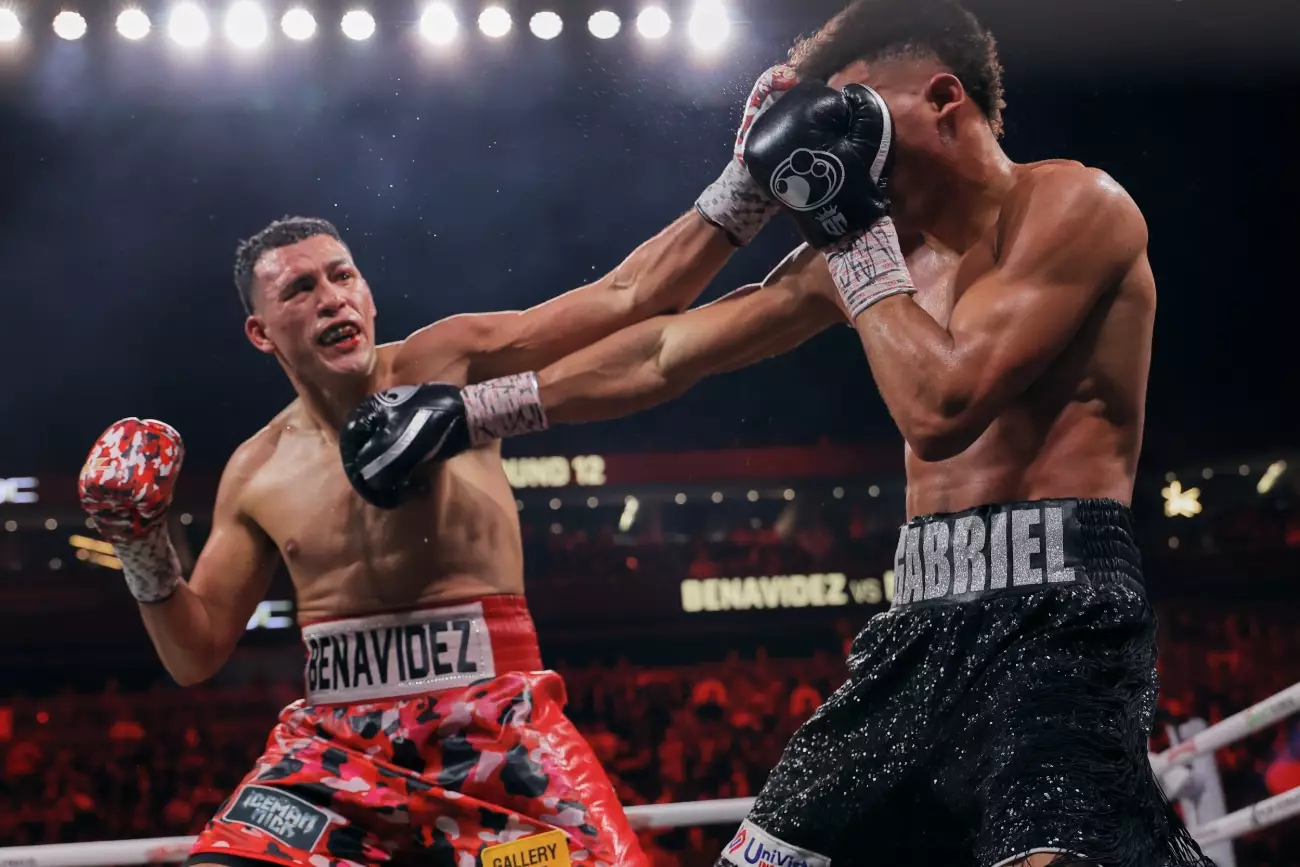The upcoming showdown between David Benavidez and Anthony Yarde is more than just a fight; it’s a spectacle to determine who truly dominates the light heavyweight division. Tim Bradley’s keen insight highlights a fundamental truth: Benavidez’s raw power and relentless volume punching could overwhelm Yarde’s speed and formidable punch, but the outcome hinges on strategic execution and mental resilience. While Bradley anticipates an early flare-up from Yarde, his confidence suggests that the Mexican-American’s sheer aggression and physicality will eventually take control, turning the contest into a showcase of attrition and brute force.
This perspective underscores an essential facet of modern boxing—power alone often isn’t enough, but when combined with stamina and relentless pressure, it transforms a fighter into an unstoppable force. Benavidez’s ability to turn aggression into dominance is what makes him dangerous. His history of fighting weaker opposition at super middleweight has allowed him to develop a style rooted in volume, but this also reveals one of his vulnerabilities: whether his mentality can withstand the rigors of genuine top-tier competition at 175 pounds.
Yarde’s Flash and Flaws: A Contest of Speed Versus Power
Anthony Yarde, with his explosive athleticism and rapid-fire combinations, embodies a different approach—one driven by quickness, showmanship, and knockout potential. Bradley’s critique of Yarde’s physique and stamina, particularly when nearing the championship rounds, exposes critical weaknesses. His muscular build, while impressive, becomes a double-edged sword when fatigue sets in, often causing him to resort to arm punches that lack the precision needed to topple a heavyweight like Benavidez.
Yarde’s power, undeniably dangerous, is his calling card. The fact that few opponents manage to drag him into late rounds with sustained offense speaks volumes about his fight-ending capabilities. But if Benavidez’s volume and pressure can wear him down, the likelihood of a knockout increases significantly. The question is whether Yarde can employ his speed early enough to avoid becoming overwhelmed—a task complicated by his tendency to fade and resort to less effective tactics under fatigue.
The Size and Style Gap: A Critical Factor in the Outcome
Size disparity is often an overlooked element in these matchups, yet it may hold the decisive edge for Benavidez. Bradley’s colorful description of Yarde’s muscular build versus Benavidez’s more swimmer-like physique isn’t mere aesthetics but a tangible strategic advantage. Benavidez’s willingness to engage in a firefight, combined with his improved stamina at 175 pounds, might give him the durability needed to weather Yarde’s initial storm. Conversely, Yarde’s reliance on explosive power becomes risky if he cannot finish the fight early or withstand Benavidez’s relentless assault.
Benavidez’s style, characterized by an unyielding volume of punches, resembles that of a swarming predator—constantly in motion, constantly applying pressure. If he maintains proper discipline and avoids reckless exchanges—an ongoing challenge given his past tendencies—the Mexican Monster has the potential to turn the fight into a one-sided affair. Conversely, if he succumbs to temptation and trades recklessly, the fight could tilt in Yarde’s favor with one well-timed, devastating shot.
The Psychological and Tactical Battleground
Beyond the physical, the psychological aspect is critical. Yarde’s flashy style and knockout power can create a sense of danger and unpredictability, but Bradley’s critique hints at the importance of discipline and stamina. Similarly, Benavidez’s past focus on volume punching—paradoxically a weakness—can be mitigated with tactical patience. His recent fights have shown signs of vulnerability, especially after taking damage. If Yarde can push him into the later rounds and capitalize on any signs of fatigue, an upset is conceivable.
The fight’s outcome could ultimately be decided by who maintains composure under pressure. Yarde’s advantage lies in unpredictability and explosive potential; Benavidez’s strength is in relentless perseverance. Their stylistic contrasts make the encounter captivating, yet also increasingly predictable: power may win a few rounds early, but volume and endurance tend to dominate over time.
Ultimately, this bout will serve as a testament to the importance of discipline, size, and strategic intelligence in boxing’s current landscape. Benavidez’s challenge is resisting the urge to slug recklessly despite his aggressive instincts. With the right approach, he has the capacity not only to win but to establish himself as a true light heavyweight force—if he can master himself as much as his opponents.

